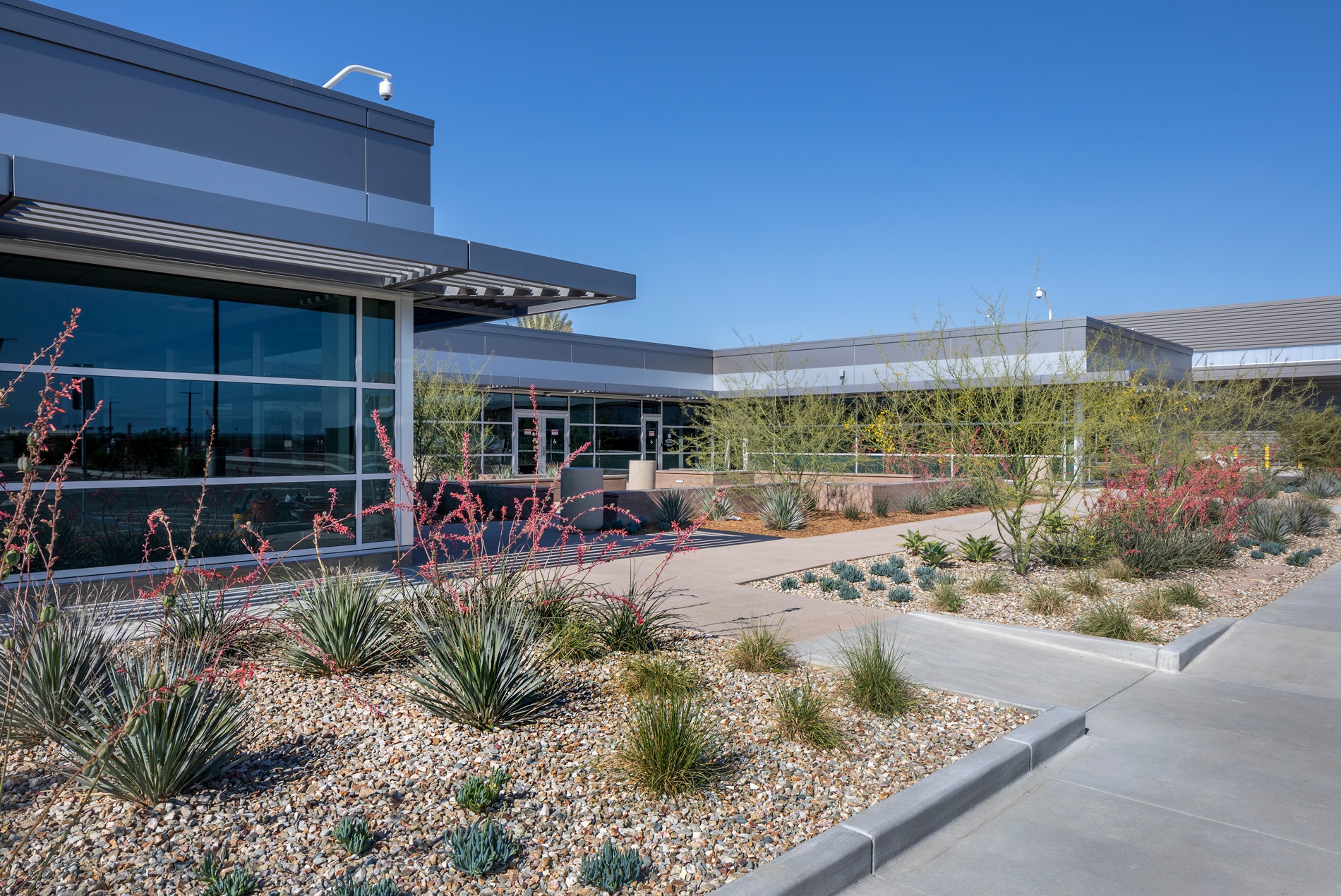Completed in 2020, the Airport Support Facilities (ASF) project designed by HOK at San Diego International Airport includes one LEED Platinum and three LEED Gold-certified buildings that are all net-zero ready.
The San Diego County Regional Airport Authority has long been a leader in greening airports. This month, the San Diego International Airport became one of only three North American airports to earn the highest level of certification under the Airports Council International (ACI)’s Airport Carbon Accreditation (ACA) program: Level 4+ ‘Transition.’ To do so, the Airport Authority demonstrated that it is reducing carbon emissions under its direct control (including those resulting from building energy use) and is on track to meet international net zero emission targets.
The Airport Authority’s 2021-2022 Sustainability Report details its ambitious goals and recent achievements in building more environmentally friendly, resilient facilities.
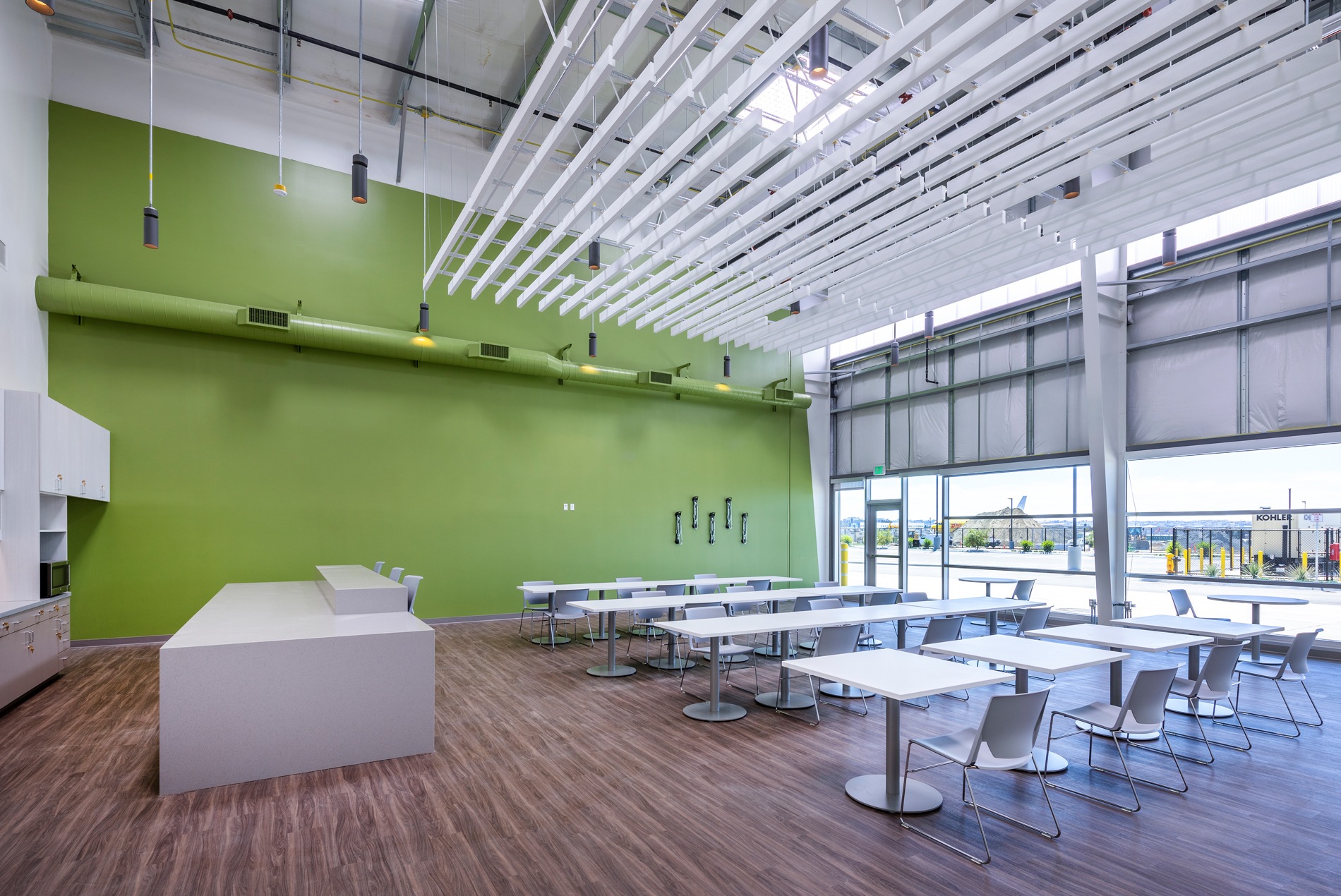 LEED-Certified Support Facilities
LEED-Certified Support Facilities
“Large passenger terminal projects tend to get most of the attention in conversations and articles about how to design airports to be more sustainable,” said Albert Kaneshiro, senior project manager in HOK’s Los Angeles studio. “To truly attack climate change and enhance the health and well-being of passengers and airport staff, however, designers must also consider the dozens of support buildings that enable an airport to run efficiently.”
HOK collaborated with the Airport Authority and Sundt Construction on the Airport Support Facilities (ASF) project, which opened in late 2020 as part of a progressive design-build (PDB) delivery strategy.
By exceeding the Airport Authority’s LEEDv4 Silver certification requirement for all new airport buildings or major renovation projects, the ASF’s four buildings have made significant contributions to its sustainability goals.
- The LEED Platinum, 11,200-sq.-ft. Facilities Management Department (FMD) Administration Building houses airport offices and sits adjacent to the rental car facility.
- The LEED Gold, 92,800-sq.-ft. Airline Support Building (ASB) is home to office, maintenance and warehouse space supporting the airport’s cargo operations. It is located just off the main road near the airport’s entrance.
- The LEED Gold, 64,200-sq.-ft. Facilities Management Department (FMD) Shops Building comprises warehouses and shop space for the airport’s electrical, carpentry, plumbing and paint departments. It’s adjacent to the FMD Building.
- The LEED Gold, 7,000-sq.-ft. Airport Fueling Operations (AFO) Building has offices, a maintenance shop and parking facilities for large aircraft refueling trucks.
HOK’s team began developing strategies for environmental sustainability, resilience and occupant health in these buildings during early visioning workshops with SAN officials and other project team members. The team then worked with the Airport Authority to ensure that the design for all four buildings complied with its Sustainability Management Program, which requires plans for water stewardship, strategic energy, carbon neutrality, clean transportation, zero waste, climate resilience and biodiversity.
The team incorporated these plans into the design and tracked progress in each area. This included conducting detailed energy modeling studies throughout the design process.
Daylight and Energy Conservation
Floor-to-ceiling windows in the FMD Administration Building’s work and break areas provide access to natural light and views out to a central courtyard. In both the FMD Administration Building and AFO Building, glass partitions between offices, conference and break rooms allow daylight deep into the space. Clerestory windows and skylights in the FMD Shops Building optimize natural light and create a comfortable work environment.
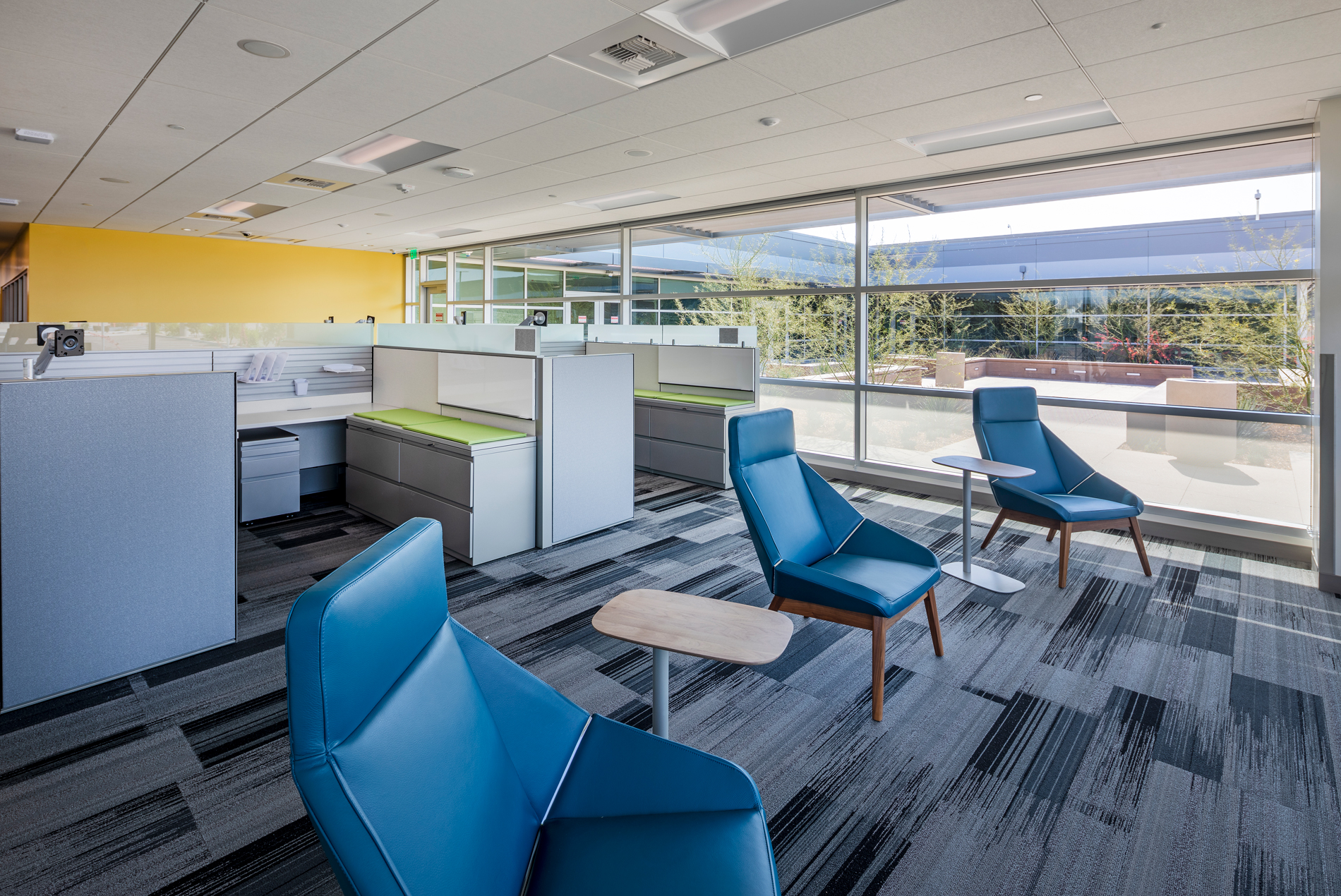 Other energy-saving measures include:
Other energy-saving measures include:
- Canopies extending from all four buildings decrease heat gain and protect employees from the elements.
- Recessed glazing on the Airline Support Building reduces glare and heat gain.
- Reflective roofs reduce cooling energy demand and the heat island effect.
- Photovoltaic panels mounted on the roofs of carports in the parking lot collect solar energy.
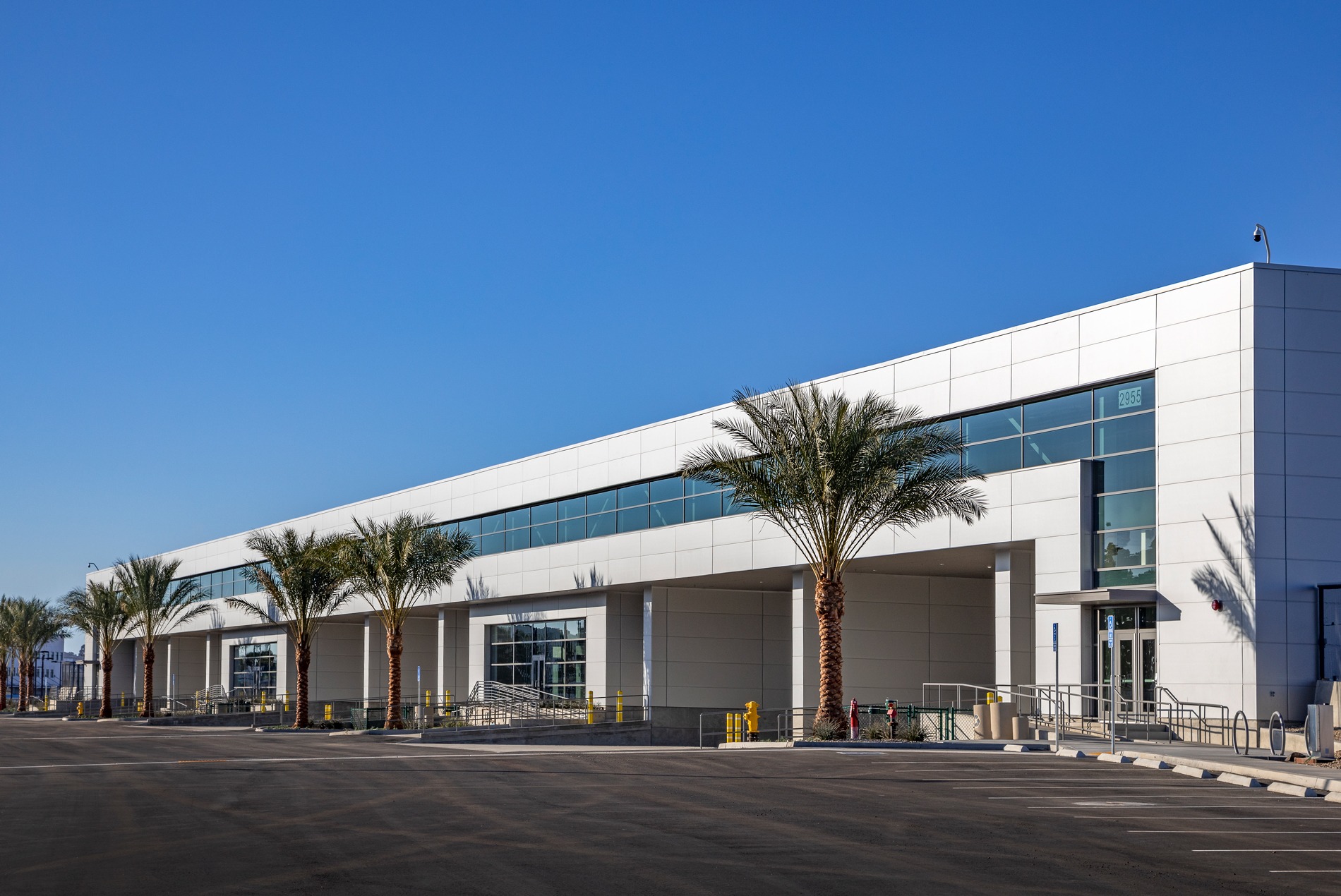 All four buildings outperformed the airport’s Energy Use Intensity (EUI) goals, achieving less than 30 kBtus/sq.-ft. per year. This is a 70% reduction compared to baseline buildings.
All four buildings outperformed the airport’s Energy Use Intensity (EUI) goals, achieving less than 30 kBtus/sq.-ft. per year. This is a 70% reduction compared to baseline buildings.
Electricity—including some from an airport photovoltaic solar array—powers the buildings without any natural gas or on-site combustion equipment. As a result, all four buildings are eligible for LEED Zero Energy certification.
Breathe Easy
Inspired by San Diego’s transition from the Pacific Ocean to the Laguna Mountains, the design team created several outdoor terraces and courtyards for employees to engage with nature.
Doors in the FMD Building’s conference and training rooms allow direct access to the courtyard when weather permits—which, in sunny San Diego, is almost always.
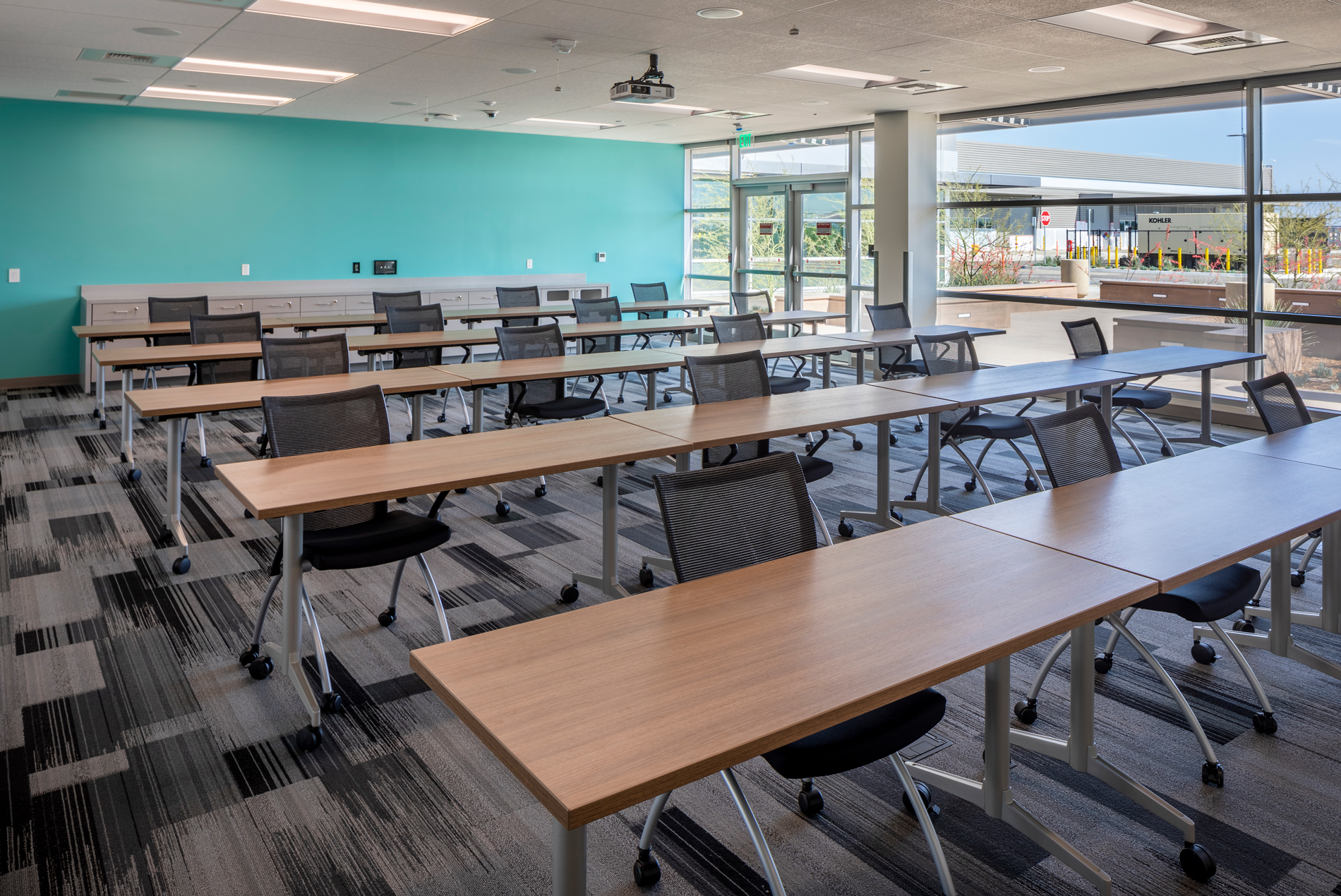 All four support facilities take advantage of the mild climate by using automated louvers for natural ventilation. The fresh air lowers maintenance costs while minimizing unwanted humidity and moisture and improving employee health and well-being.
All four support facilities take advantage of the mild climate by using automated louvers for natural ventilation. The fresh air lowers maintenance costs while minimizing unwanted humidity and moisture and improving employee health and well-being.
Water Management
Based on its proximity to San Diego Bay, rising waters and potential flooding are top of mind at SAN. The team re-graded the site to elevate the structures and created a 3.2-million-gallon underground cistern to collect up to 16 million gallons of stormwater runoff each year. The airport’s car rental facility uses the retreated water from the cistern to wash cars.
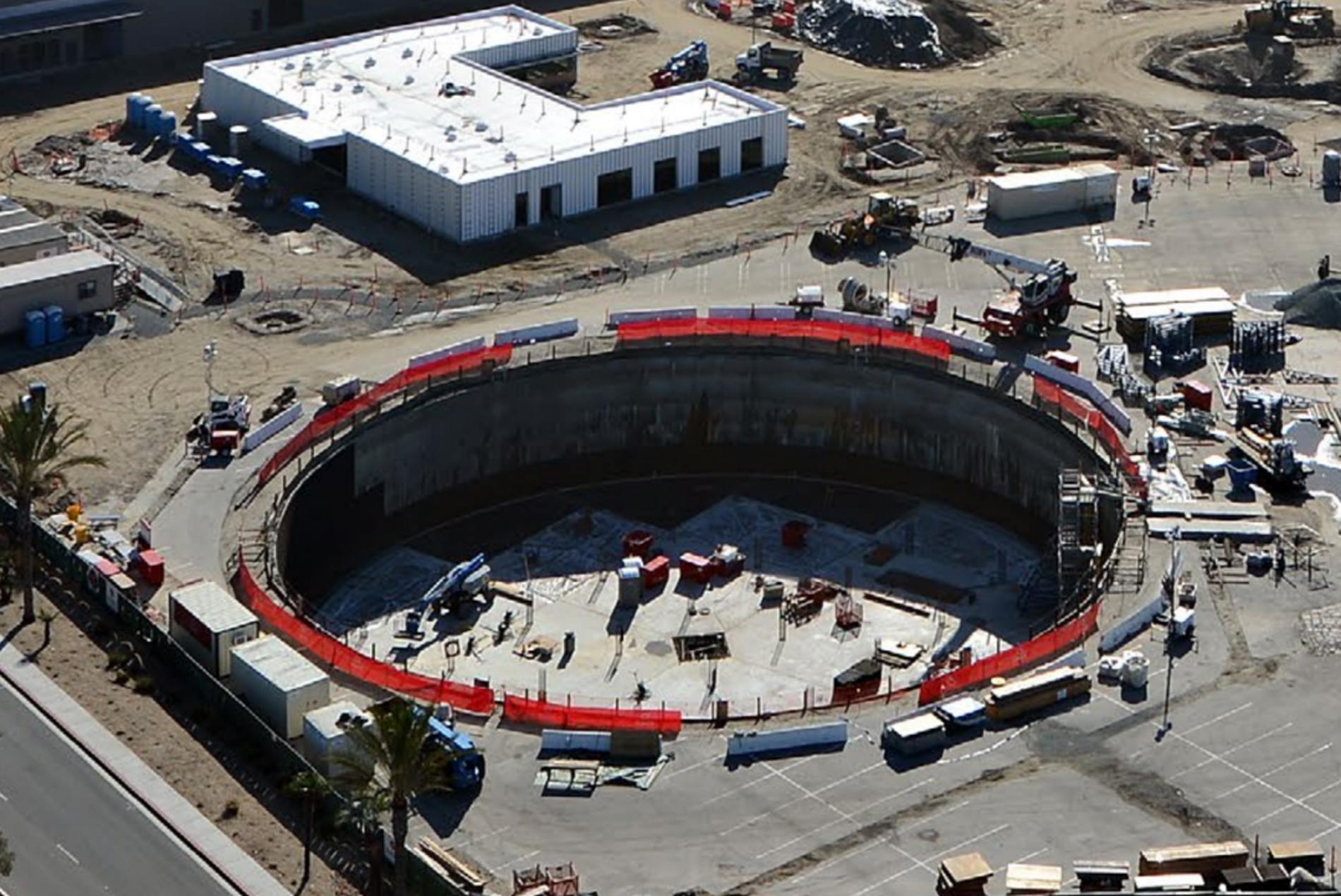
Construction shot of the cistern courtesy of Sundt Construction.
The outdoor spaces also feature native landscaping materials that thrive in San Diego’s temperate climate, cutting SAN’s water use for irrigation by 90%.
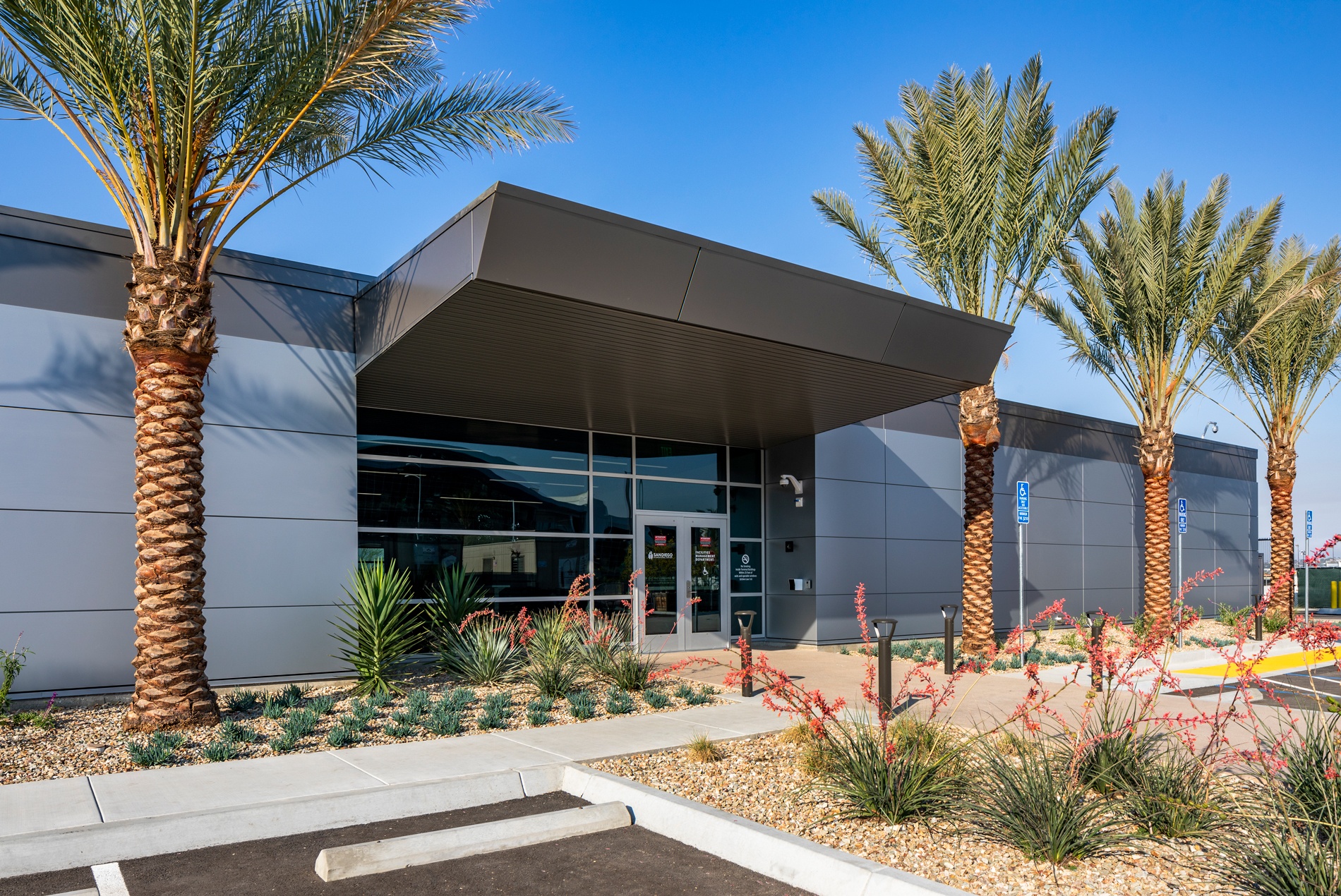 Highly efficient plumbing fixtures installed throughout the buildings reduce water use by 45%.
Highly efficient plumbing fixtures installed throughout the buildings reduce water use by 45%.
Healthy Amenities
A fitness center in the FMD Shops Building helps employees stay active.
Bicycle racks, shower facilities and electric vehicle charging stations support more sustainable transportation methods.
Low Embodied Carbon and Healthy Materials
The low embodied carbon materials included a cementitious foundation and optimized, prefabricated and lightweight steel framing for the buildings.
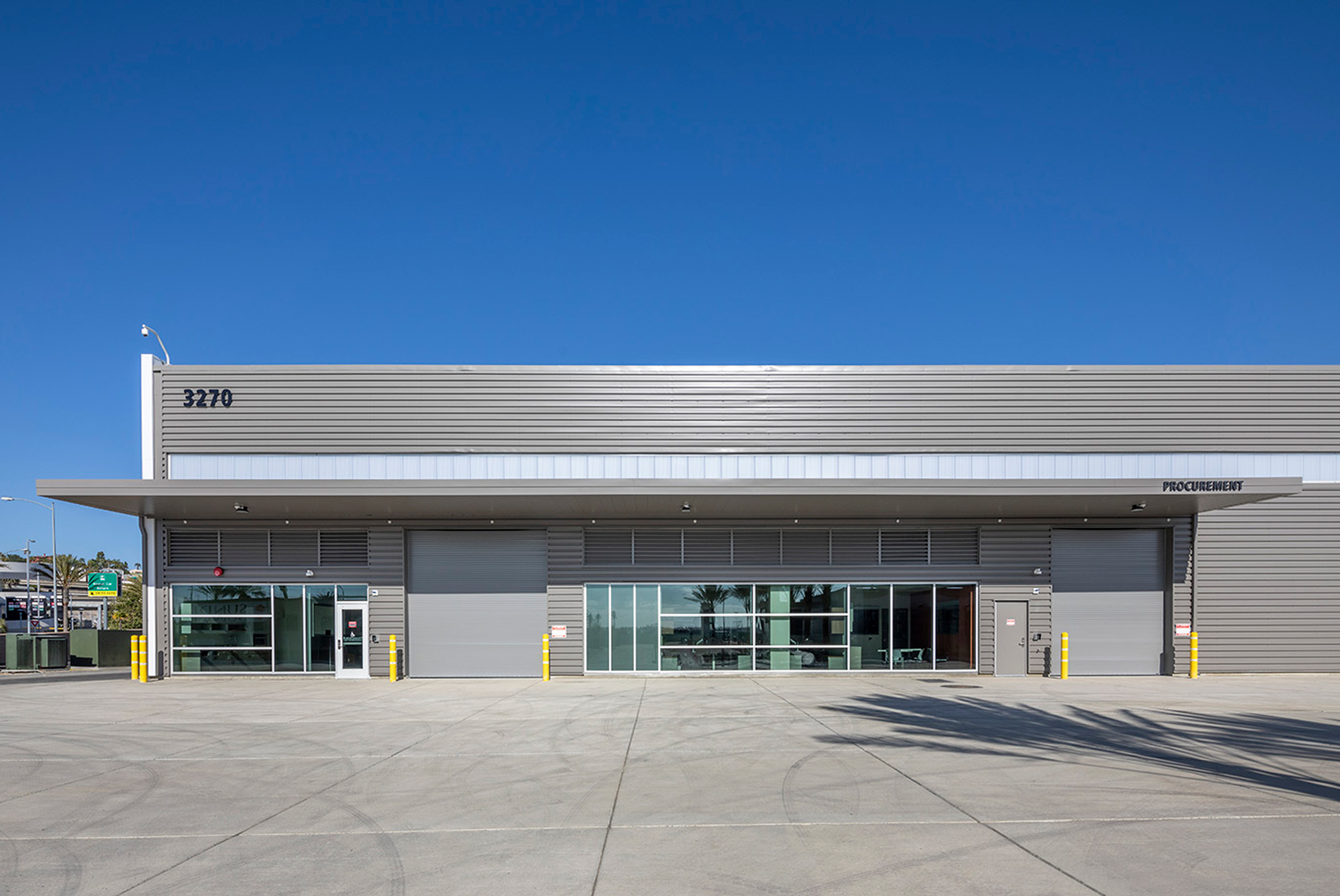 The team placed the Airline Support Building’s heavy mechanical wells on the ground instead of on the roof, where mechanical equipment is typically found. This design allowed for a less intensive structure for the roof while optimizing it for the future addition of solar panels.
The team placed the Airline Support Building’s heavy mechanical wells on the ground instead of on the roof, where mechanical equipment is typically found. This design allowed for a less intensive structure for the roof while optimizing it for the future addition of solar panels.
The design team also examined the cradle-to-cradle life cycle of products used in the buildings to determine their potential environmental impact.
Toward Zero Emissions
The aviation industry accounts for about 2% of the greenhouse gas emissions contributing to global warming. “As the industry pursues the development of sustainable aviation fuels, designers can continue to help airports work toward achieving net-zero emissions in their buildings.” said Sean Quinn, leader of HOK’s Regenerative Design studio. “In addition to being more sustainable in every way, this enhances the health of passengers, staff and the community.”
